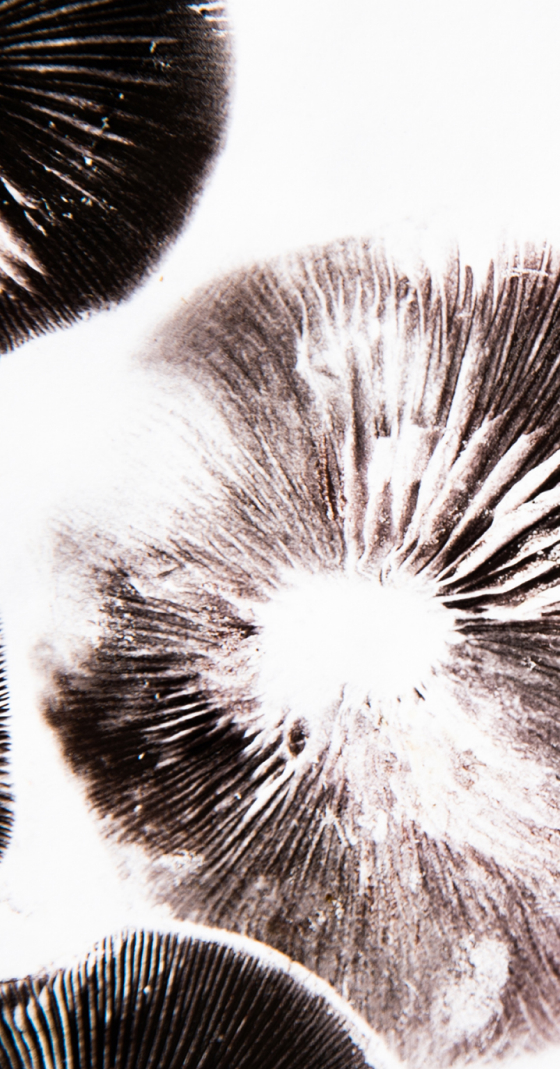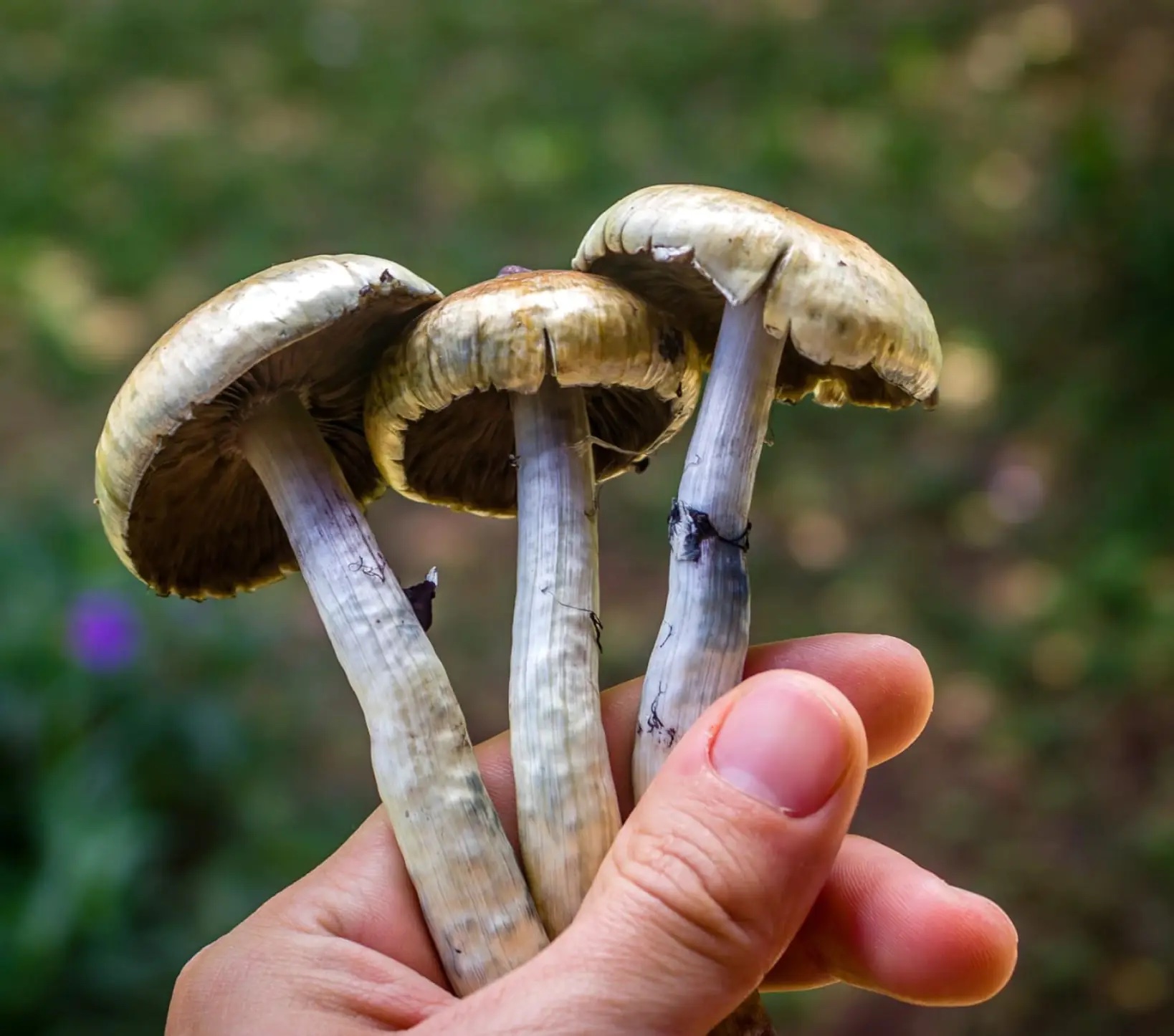
The Role of Music in Psychedelic Therapy
How music impacts psychedelic experiences and its role in healing therapies
Music and Psychedelics: Past, Present, and Future
The convergence of music and psychedelics is not just a modern phenomenon arising from the rise of therapeutic psychedelic use. This harmonious marriage is an ancient spiritual practice deeply rooted in human history.
Music has a significant impact on the human psyche. For millennia, humans have used sound to induce altered states of consciousness and ecstatic experiences. In the earliest human tribes, early forms of music served a role in uniting communities and connecting with the spirit world.
Sound-induced trance states allowed our ancestors to alter their consciousness and transcend the physical world into a mystical experience, from which they returned with meaningful symbols that formed the basis of our future metaphysical beliefs.
In the same way that our ancestors used sound to induce these ecstatic, spiritual states, they also consumed psychoactive plants and fungi for the same purpose, often combining the two for a deeper connection to the divine.
Today, as the field of psychedelic therapy grows, music's ability to facilitate altered experiences has gained renewed attention.
The mechanism that gave our ancestors healing and connection to the mystical is integral to the emergence of psychedelic therapy. From indigenous shamanic ceremonies to modern clinical settings, music amplifies the therapeutic potential of psychedelics in profound and mysterious ways.
We examine the history, science, and future of music as they relate to the psychedelic experience, offering insights into why it plays such a crucial role and how it can be effectively curated to maximize the impact of psychedelic therapy.
The Roots of Psychedelics and Healing with Music
In many ancient and shamanic traditions, sound is seen as a bridge between the physical and spiritual realms, guiding participants through transformative experiences and fostering a deeper connection to themselves, the universe, and the divine. Here are some of these traditions:
- Shipibo Tradition (Peru): Music is an essential element of the Shipibo people within the Amazon rainforest, who work with ayahuasca in local ceremonies. Icaros, sacred songs believed to hold spiritual power, are at the core of their ceremonies. Icaros serve as navigational tools that guide the shamans through the complex spiritual landscapes opened up by ayahuasca. Each icaro is chosen for the needs of the ceremony, whether it is for protection, healing, or amplifying the effects of the medicine. The Shipibo healers, also known as curanderos or curanderas, receive these songs through their spiritual visions or from the plant spirits themselves, further emphasizing the sacred connection between sound and the psychedelic experience.
- Bwiti Tradition (Africa): In the Bwiti religion of Central Africa, music plays a central role in iboga ceremonies. Iboga, a powerful psychedelic derived from the root bark of the Tabernanthe iboga plant, is used as a sacrament to induce deep introspection and spiritual awakening. During these ceremonies, repetitive rhythms, drumming, and chanting create a hypnotic soundscape that helps participants enter and sustain altered states of consciousness.
- Huichol Tradition (Mexico): The Huichol people, native to Mexico, incorporate music into their peyote ceremonies, where this psychoactive cactus allows access to spiritual insight and healing. The ceremonies are accompanied by the melodic sounds of traditional instruments, including violins, drums, and rattles, as well as chanting and singing.
- Siberian Shamanism (Russia and Mongolia): In the Siberian and Mongolian shamanic traditions, music plays a crucial role in ceremonies that involve the use of psychoactive plants or other trance-inducing practices. Shamans use instruments like drums, jaw harps, and throat singing to create rhythmic vibrations that help them and their participants enter altered states.
- Modern Psychedelic Therapy: In contemporary psychedelic-assisted therapy, music plays a pivotal role. Playlists curated for therapeutic sessions often feature ambient, meditative, or classical music that complements the participant's emotional and psychological journey. Research has shown that music enhances the therapeutic effects of psychedelics by evoking deep emotions, guiding the experience, and helping participants process their insights. Each track is carefully selected to match the different phases of the journey, from the initial ascent to the peak and eventual return to baseline.
Across cultures and traditions, the relationship between music and psychedelics serves a purpose. Music becomes a guide, a protector, and a tool for healing and connection through the amplification of emotional and spiritual intensity. Whether it's through ancient rituals or modern therapeutic practices, this timeless connection underscores the universal power of music and sound to tap into the depths of human consciousness.
How Music Amplifies Psychedelic Experiences
Psychedelics alter our perception of reality by dissolving the ego's boundaries and beliefs, which serve to help us understand ourselves and everything around us in ordinary states of consciousness. They do so by disrupting the usual patterns between brain networks and enabling new connections, echoing research that shows how music has a similar effect of engaging diverse networks of brain regions.
Music, in turn, serves as an additional catalyst by guiding the unfolding psychedelic experience. The qualities of the selected music help shape the perception and emotion of the journeyer. Together, psychedelics and music form a synergistic relationship, amplifying the potential for personal transformation and introspection.
Modern research supports the idea that music amplifies the therapeutic effects of psychedelics. Since psychedelics act on serotonin receptors, there is an enhancement of emotional and sensory experiences. When combined with music, these effects are significantly enhanced.
Processing trauma often necessitates accessing difficult emotions buried beneath layers of defence mechanisms, and music creates a safe container within which to explore those emotions. For example, in psilocybin therapy, calming tones may evoke nostalgia and safety, while heavier, dramatic pieces can help patients confront grief, loss, or fear.
Inner visions often accompany psychedelics, and the music playing during the experience can significantly influence the nature of these visions. Visions can serve as powerful tools for self-reflection, insight, and emotional release, making music a helpful means for individuals to connect with their inner world.
Music also serves as a guide during a psychedelic experience by shaping the journey and providing direction. The qualities of the music create a trajectory that influences the emotional and mental path of the experience. By setting the pace and atmosphere, music helps navigate the depths of the mind, offering a sense of structure and flow as the medicine takes effect.
Music in Psychedelic Therapy's Renaissance
The importance of music in psychedelic therapy cannot be overstated. With the resurgence of psychedelic therapy to treat depression, PTSD, end-of-life distress, and more, music has emerged as an essential accompaniment for this process. Clinical studies at Imperial College London demonstrate that curated music enhances the outcomes of psychedelic-assisted therapies. It serves as both a grounding element and an amplifier of experience, helping individuals navigate the complex nature of the psychedelic state.
But why is music’s role so crucial in the modern context?
- Guiding the Experience: Music serves as a therapeutic guide, helping clients navigate various phases of their psychedelic sessions. For instance, uplifting tracks might support a "breakthrough" moment, while softer music during the descent phase fosters emotional integration.
- Connecting Therapists and Clients: Therapists can gain a deeper understanding of a client's state by knowing the path taken by the music. Shifts in emotional state often correlate with distinct phases of an album or playlist.
- Filling Emotional Voids: Psychedelic experiences can feel confusing when left suspended without direction. Music fills this potential void, acting as a co-therapist to help maintain emotional flow and stability.
Without this carefully curated soundscape, psychedelic therapy sessions lose an essential dimension that facilitates depth, safety, and meaning.
Research suggests that music takes on an entirely different quality during psychedelic-assisted therapy when compared to its properties in everyday circumstances.
When combined with the mind-altering effects of psychedelics, music is so profound that its presence is like a sentient actor that collaborates with the participants and therapists involved in the experience.
How to Prepare a Music List for Psychedelic Therapy
Given how subjective the experience of music is, it can be a challenge to choose the ideal music for psychedelic therapy from person to person. Whether you are creating a playlist for yourself or your clients, it requires an understanding of the participant's emotional state, preferences, and areas of resistance, such as fear of losing control, confronting emotions, or over-analyzing routed in personality traits like perfectionism, criticizing, disrespectful attitude, being self-critical, preoccupation with appearance, social withdrawal, or an inability to accept compliments or constructive criticism
A successful music selection will evoke feelings of safety, introspection, and openness, allowing the participant to access deeper layers of emotion and insight. The playlist should also align with the session's goal. Selecting the wrong music can disrupt this process, cause confusion, and lead to distraction or detachment.
Selecting the right music requires intention and understanding of how it interacts with the unique states of consciousness induced during psychedelic therapy. A thoughtfully curated playlist or album design creates an ideal inner space for the individual to surrender to the process, be open to emotions, and achieve meaningful breakthroughs.
Key Considerations
Theme and Resonance
Choose music that aligns with the participant's preferences to create a more personalized and meaningful experience. For instance, some people might find classical compositions, such as symphonies or operas, too dramatic or opulent to relate to. On the other hand, others may resonate deeply with the complexities of classical music, finding it inspiring or cathartic.
Similarly, including tracks with yogic chanting may be well-suited for those looking to imbue their experience with an air of Eastern mysticism, or perhaps to connect them with an Indian lineage. However, others may feel that these songs are too exotic and distant.
Understanding the participant's unique tastes and what resonates with them is key to selecting music that enhances the experience rather than detracts from it.
Tone and Direction
Since music can significantly influence mood, identifying the purpose of the session is crucial in selecting the right music to support the process. It is best to choose music with a particular emotional direction to set the overall tone and feel for the journey.
For example, a light, ambient tone with soft melodies might foster introspection, creating a calm and reflective atmosphere ideal for contemplation or moments of gentle emotional release. On the other hand, intense drum rhythms or dynamic, powerful compositions could evoke catharsis, helping to release pent-up emotions or trauma more actively and expressively.
Consider the tempo, tone, and emotional suitability of the music to ensure it complements the intended focus and desired outcome of the session, as this will guide you toward a deeper, more meaningful experience.
Timing and Transition
Match the music carefully to the session's arc, as it plays a crucial role in supporting the participant's experience. Psychedelic sessions often follow a natural progression of ascent, peak, and descent based on each medicine’s unique duration period. The soundtrack should align with these phases to create a cohesive and fluid journey.
During the ascent, the music can gently build anticipation and set a tone of curiosity and openness, preparing the participant for what lies ahead. At its peak, the music may be immersive and expansive, encouraging introspection, emotional release, or profound insights. As the session transitions to the descent, the soundtrack can gradually soften, offering a sense of grounding, comfort, and closure.
Another consideration is how individual songs are blended with those that precede or follow them. Playlists that don’t mix well can be distracting. For example, if a song that predominantly features a cello is followed by a song with Tibetan throat singing, these songs will clash stylistically. This disharmony can be enough to disrupt the participant's flow.
Ensure that transitions between genres or other musical qualities are tasteful and gradual. Abrupt shifts in theme, tone, and style can disrupt the therapeutic process by pulling participants out of their journey.
Lyrics
Music with lyrics in the participant's native language is generally avoided in psychedelic therapy because it can be overly directive, potentially influencing thought patterns or emotions in a way that distracts from the participant's own organic experience. Research even shows that lyrical music interferes with cognitive tasks.
Instead, non-lyrical music or vocals in a foreign language are often preferred. These styles provide a sense of humanity and connection without dictating or interfering with the participant's process.
As you can see, compiling music playlists for psychedelic therapy is an art that involves psychological, emotional, and artistic considerations to support the best therapeutic process.
Ultimately, thoughtfully curated music acts as a guide. It enhances the therapeutic potential of the session by helping participants navigate their internal landscape with greater ease and depth. By setting the tone and holding space for all that emerges from within the participant, the music provides a foundation for the therapeutic process while remaining unobtrusive and supportive. Music’s role is to enhance, not overshadow, the journey by ensuring that the internal experience remains the focal point. This careful balance between guidance and neutrality is what makes music such a powerful yet delicate tool in therapeutic contexts.
Key Artists Making Music for Psychedelic Therapy
Innovative artists are leading the charge in bringing music into the conversation about psychedelic therapy, recognizing its powerful ability to enhance emotional processing and create deeply immersive experiences.
Wavepaths, founded by Mendel Kaelen, an early psychedelic researcher at Imperial College London, offers personalized, AI-curated soundscapes for psychedelic sessions. They create adaptive musical environments to support the dynamic and unique nature of psychedelic experiences through their platform. Based on all the factors discussed above, artificial intelligence, as used by companies such as Wavepaths, enables us to tailor psychedelic therapy music selections to the exact needs of each client.
Several artists have also pursued the creation of music specially dedicated to psychedelic journeys. They include Jon Hopkins, East Forest, and Justin Boreta. Given the growing list of artists who have shared about how psychedelics positively impacted them, it's easy to see why attention is going towards the musical component of these experiences.
A quick search on Spotify or Apple Music for "Psychedelic Therapy" playlists will show curated lists consisting of additional artists ranging from Antonio Vivaldi to Brian Eno, Enya, Max Richter, and many more.
These artists, old and new, all highlight the modern intersection between music and psychedelic therapy. Their musical innovations demonstrate how sound can be harnessed to support the unfolding process of a therapeutic psychedelic journey most effectively.
Best Playlists and Albums for Psychedelic Therapy
Music is an essential part of our psilocybin therapy sessions. Based on what this article has outlined, the “best” choice for any individual is impossible to determine due to how multifaceted the experience of both psychedelics and music is. However, it is possible to make a choice that is close to ideal.
We have compiled our top selections to help you narrow your selections for any upcoming psychedelic sessions you are preparing for.
Psilocybin-Assisted Therapy
Designed by Bill Richards for the psilocybin-assisted therapy research done at Johns Hopkins University.
Created by Mendel Kaelen for psilocybin therapy studies at Imperial College London.
Made for psilocybin research at Copenhagen University Hospital. Its curation is highlighted in this in-depth analysis.
This album, created by East Forest, was inspired by his experiences at Mexican mushroom ceremony.
East Forest’s second album with his signature sound and style for psychedelic therapy.
This album is a research-backed creation for psychedelic therapy from Massey, New Zealand, consisting of a live recording utilizing 28 musicians.
Curated by MycoMeditations. Ambient music with a unique variety of tones, vibrations, and brain frequencies to deepen the therapeutic experience.
Curated by MycoMeditations. Shamanic, primordial themes with highly energetic elements that heighten and expand altered states of consciousness.
Curated by MycoMeditations. Gentle progression into a powerful mix of ambient, shamanic, and instrumental music for the peak experience.
Ketamine-Assisted Therapy
MDMA-Assisted Therapy
Final Thoughts: Music in Psychedelic Healing
Psychedelic therapy is ushering in a new era for mental health, and music is an indispensable part of this movement. It harnesses age-old traditions, amplifies modern scientific findings, and connects clients to their therapists, emotions, and themselves.
Looking ahead, there's potential for even more innovation in the area of music. AI-driven soundscapes, immersive experiences, and personalized soundtracks will continue to shape the field in the years to come, leveraging music's ability to facilitate profound healing.
Are you exploring new mental health solutions or seeking personal transformation with psilocybin therapy? As the original therapeutic psychedelic retreat, MycoMeditations provides the perfect setting for safe, expert-guided psilocybin therapy sessions alongside our carefully selected list of music playlists and albums for an unparalleled experience.





